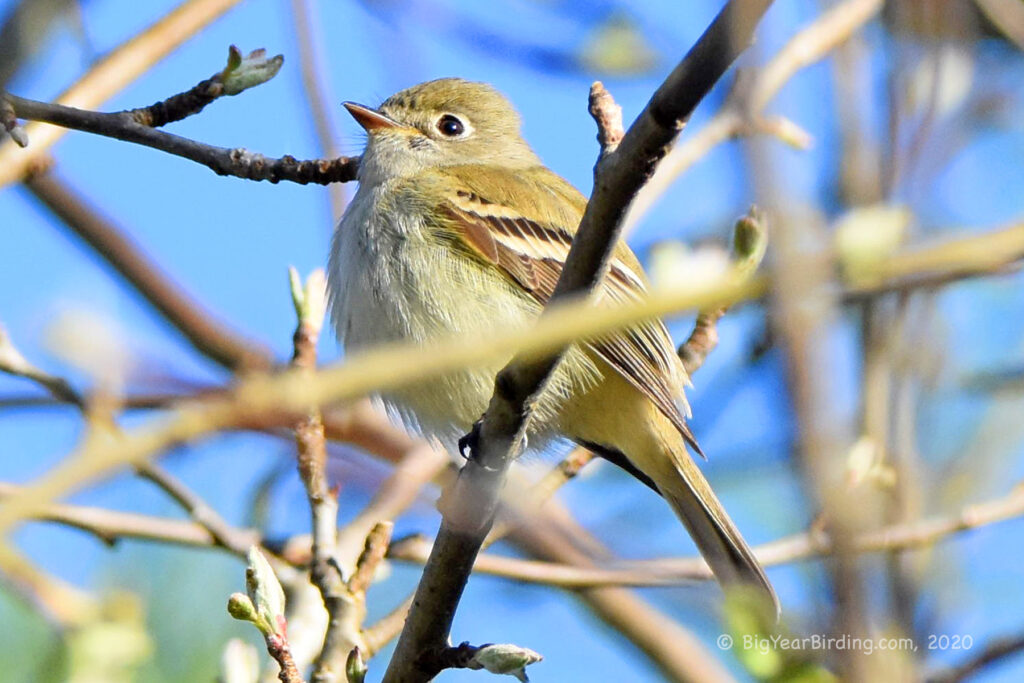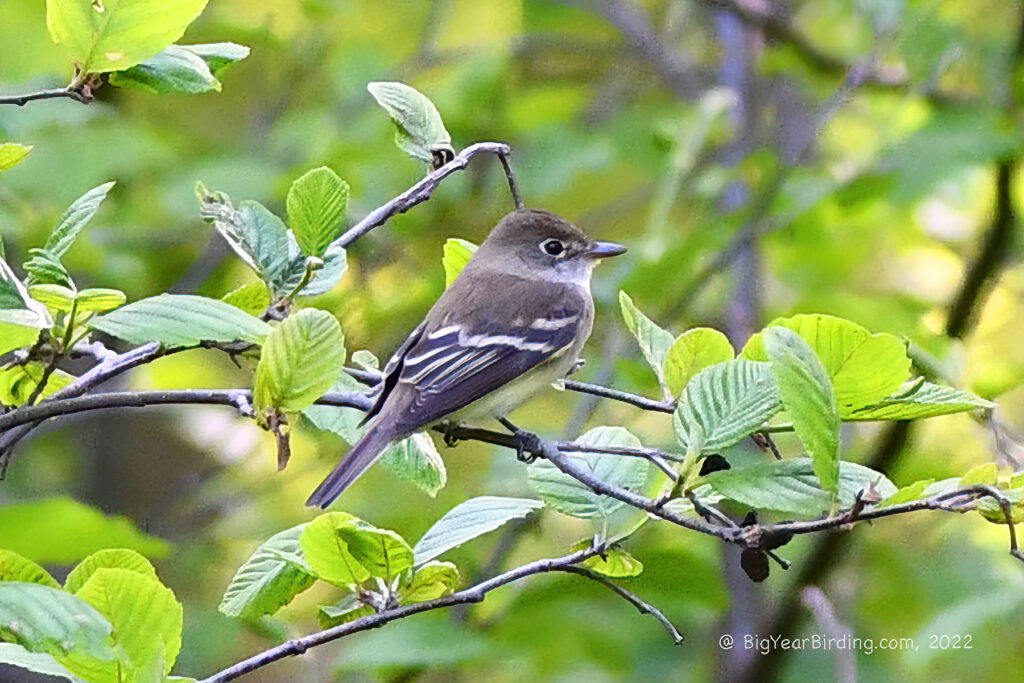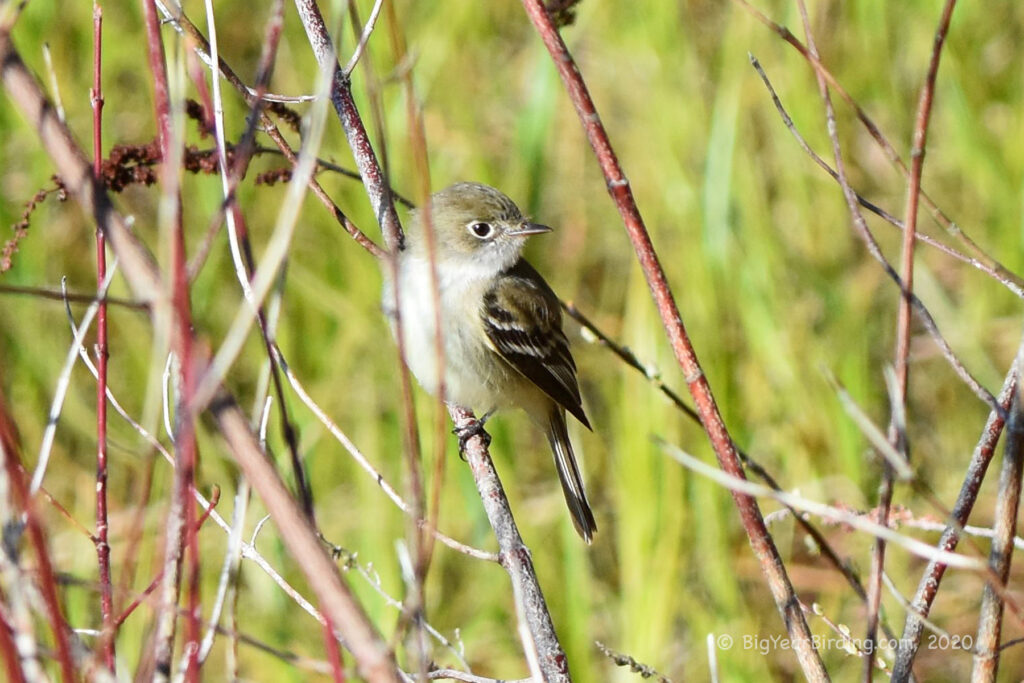
The Least Flycatcher (Empidonax minimus) is a small passerine bird that belongs to the tyrant flycatcher family. It is the smallest flycatcher in North America, with a length of only 4.3 inches (11 cm) and a weight of 0.3 ounces (8 grams). The Least Flycatcher is relatively plain-looking, with olive-green upperparts, pale underparts, and a distinct white eye ring that makes it easy to identify.

The most distinguishing field mark of the Least Flycatcher is its call. It has a distinctive “che-bek” call that is easily recognizable, even for novice birdwatchers. Additionally, the Least Flycatcher has a short, flat bill, which is useful for catching small insects mid-air, its primary food source.
The Least Flycatcher is a migratory bird that breeds in the boreal forests of Canada and parts of the northeastern United States. During the winter, it migrates to Central America and northern South America. The migration period typically occurs from late April to early May in the spring, and from late August to early September in the fall.
During the breeding season, the Least Flycatcher can be found in deciduous and mixed forests, where it builds its nest on a horizontal branch or in a fork of a tree. The nest is made of grasses, moss, and lichens and is often lined with animal hair or feathers. The female typically lays 3 to 5 eggs, which are incubated by both parents for about two weeks.

The Least Flycatcher is an insectivore, feeding primarily on small flying insects such as flies, moths, and beetles. It can often be observed perched on a branch, scanning the surrounding area for potential prey before darting out to catch it mid-flight. Despite its small size, the Least Flycatcher is an energetic and active bird, which makes it a popular subject for birdwatchers and nature enthusiasts alike.

